As modern Mongols live
Mongols - the combined name of several peoples (Daur, Oirats, Barga, monguor people, etc.), most of whom resided in the territory of the Republic of Mongolia, and some - in China. They are often associated with fierce warriors, conquerors of vast territories. And besides, Mongolian society was developed, had their own written language. How are the descendants of nomads today, and what traditions are still - in our material.
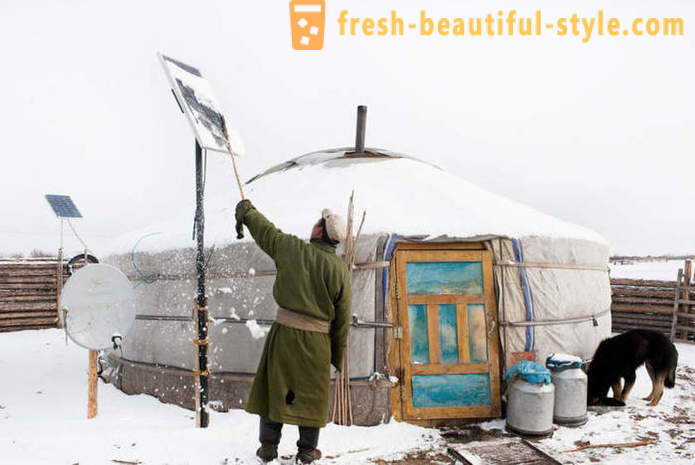
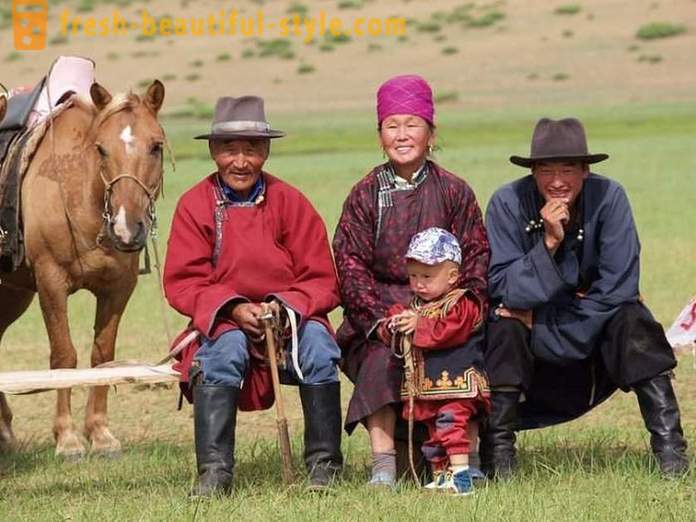
Where did the name "Mongols?
Until now, the etymology of the word is the subject of controversy because there are several versions, each of which is under a certain base. The most popular of them - the word "Mongol" was suspected of "moŋg", which translates as brave.
It has been suggested that the name has an analogy with the river Mang (Mang-Cola) or rock Mang (Mang-qun), located in the tribal areas - nomads often chose their clan or tribal names that way. There are also suggestions on the formation of the names of Mengwu - Shiwei tribe, named in honor of the ancestress Borzhigidov - Mang-qoljin-qo'a.
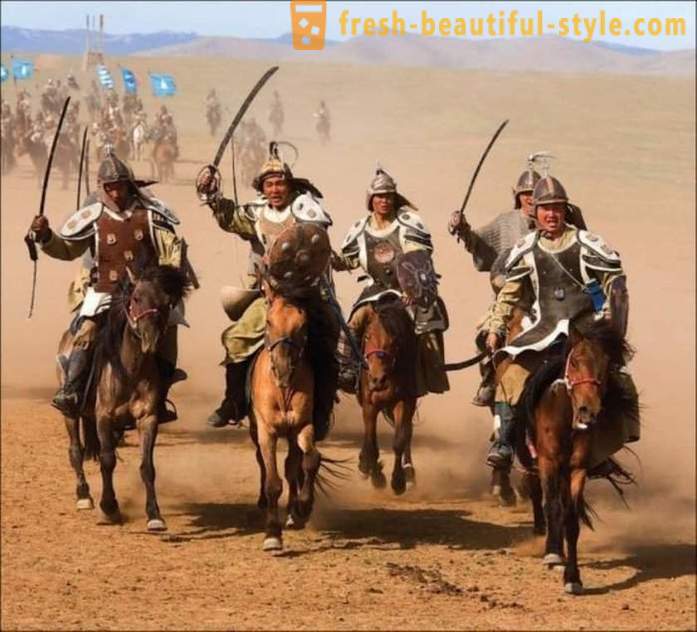
The Mongol horsemen.
Some scientists believe that "Mongol" is composed of two bases formed from the Turkic word "Mango" - bessmetny, eternal and "count" - the army.
The Mongolian way of life
Part of the tribes living in the territory of the Republic of Mongolia and northeast China in the thirteenth century were united under the leadership of Genghis Khan and laid the foundation of the Mongolian ethnic group. Lifestyle and spiritual culture of the representatives of this nation are basically the same.
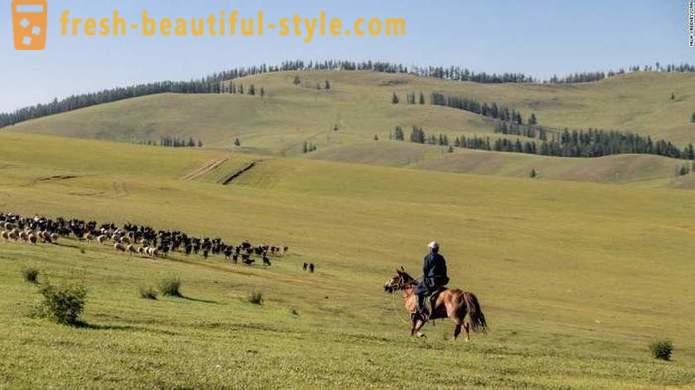
The Mongols engaged in nomadic cattle breeding, breeding cows, yaks, horses, sheep, goats, camels. They give priority to those species that are able to provide everything necessary for cooking, home improvements and making clothing.
Mongolian traditional food is meat, in priority - lamb. The most common meal - slaboprovarennoe meat with sauce, like a thick nourishing broth.

Mistresses do and meat stocks - it is smoked, dried in the sun, processed into flour. One of the favorite treats of the Mongols are also cooked by steaming or boiling fat cakes. Eats and vegetable soups. A wide variety of dairy products - a distinctive feature of Mongolian cuisine (different types of cheese, butter, cottage cheese, mare's milk, milk vodka). On the table you can see the dishes of wild grasses, berries and game.
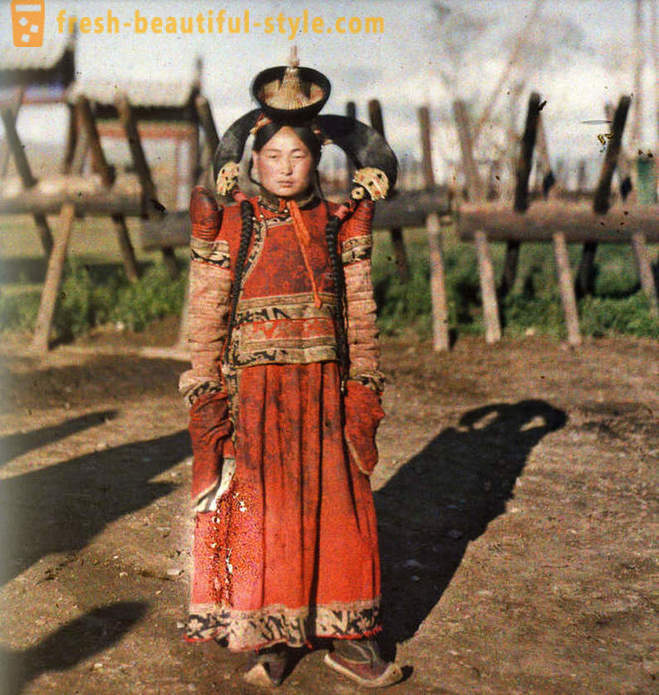
Female Mongolian costume.
Mongolian names and characteristics of their origin
Mongolian names of the original, and each has a special meaning. Many of them signify things of the world, natural phenomena, human qualities. In ancient times, female names embodied the beauty, kindness, gentleness, while men - courage, strength and courage.
Later they began to use the names associated with the names of plants and flowers. This is particularly true of female names - Sarnano (rose), Zambaga (magnolia) Sayhantsetseg (beautiful flower) Delbee (petal) Navchtsetseg (flower leaf), and others. Children were named according to the day of the week on which they were born - Byam-batsetseg (Saturday-flower), Davaatsetseg (Monday-flower), or the individual qualities - Amartsetseg (Quiet flower).
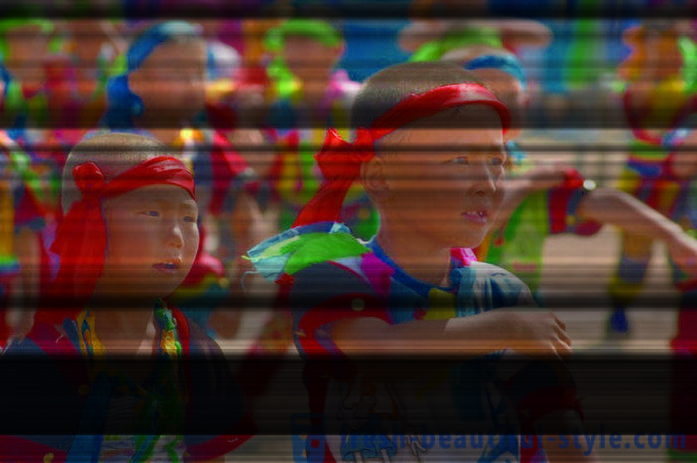
Mongolia - the first emperor of the Yuan Dynasty of China
In the history of the Mongols many interesting and little-known facts. For example, long before China Mongolia attacked and captured it, it was a period when China was in a position conquered. In the thirteenth century this large nation was invaded by the Mongol army led by Genghis Khan's grandson - Kublai Khan. It was he who began to wear the title of the first emperor of China's Yuan Dynasty.
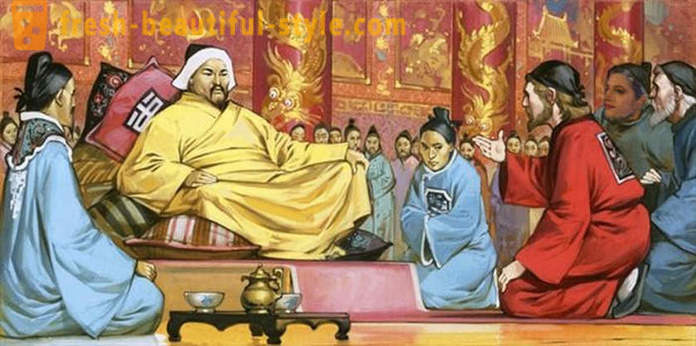
The ancient Mongols - talented mathematicians, astronomers and physicians
In ancient times, the representatives of this nation created their own counting system, invented the names of numerals, fractions, introduced here for the length measures, weight, area, volume and time. Mongolian people have created their own currencies, and left an inheritance to descendants many complex puzzles and logic problems whose solution requires a sharp mind and wit.
They were invented devices to perform mathematical operations - zurhayskie board and the multiplication table. Mongols were keenly interested in astronomy. They used mathematical knowledge to produce calendars, computing locations of astronomical objects, the length of day and night, the definition of the human age. It is believed that Mongolian nomads have made the atlas in which all celestial stars have been collected in the 28 constellations.
Mongolian interesting calendars - lunar, solar, stellar. Year in them were the names of animals, was considered the most difficult year of the monkey, and the cycle included 12 years. For the chronology of the ancient Mongols used special board - a board with 7 holes Week shows, with 12 - year. Until 1921 the treatment of humans and animals in the Mongolia was carried out exclusively by means of the popular methods. Ancient historians claim that the medicine emerged here in the Middle Ages. The historical notes mentioned plants and concoctions that are saved from pain and heal wounds. The most well-known personality in medicine - doctor Danzap-zhantsan (XVII century). He was the creator of the first Medical School, author of several books.

Mongolian doctors knew the properties of all the plants, the locus thereof, and methods of processing.
A handshake after treading on the foot and other popular superstitions
Mongols - people are very superstitious. In ancient times, the signs, the sign given to the events of special importance, and now many of them seriously.
It is a popular superstition that says that if a man stepped on the foot to another, it must then shake hands with him. If you do not, then it is possible for life to become enemies.

The Mongol horsemen always suited to their horses only from the left side, and from here they sit on top. This custom is so appreciated by the people, that even the horses are accustomed to it. If you come to the right steed - it causes aggressive reaction of the animal and can be dangerous to human health and life.
One of the biggest taboos in Mongolia is whistling indoors. People sincerely believe that such manipulations call to the house of evil spirits that bring misfortune and misery.
Bech - a favorite sport of the Mongols
Mongolian wrestling (beh) - the most popular sport in the country. For many men, it is a significant part of his life, because it symbolizes high status. If a boy is born in the family, relatives pray to the heavens about to become a wrestler. An all-male sport reflects the strength, the will, skill and ingenuity. The wrestlers are dressed in a special suit, which is a constant part of the open shirt. It is believed that this style emerged after one of the participants was a woman fights.

Be a fighter in Mongolia is very honorable













































